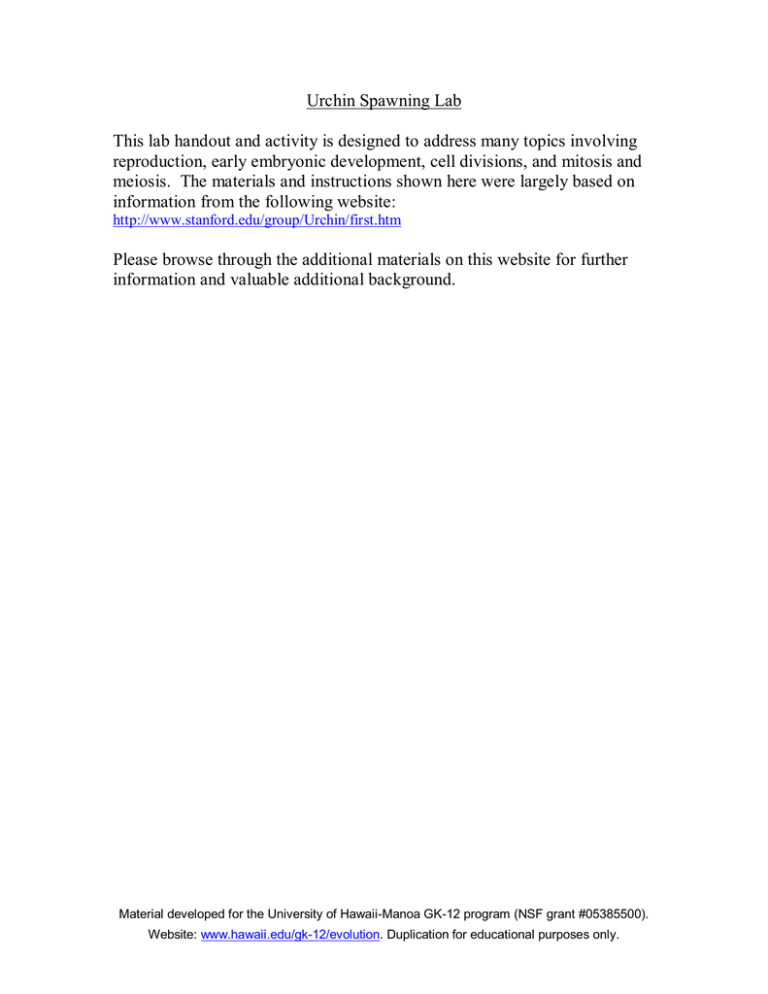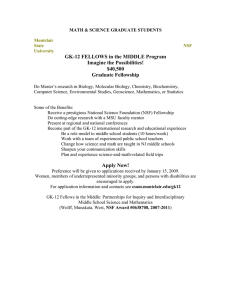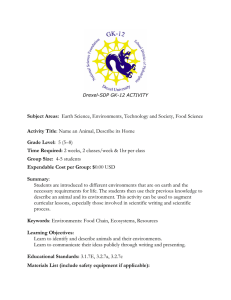Urchin Spawning Lab - University of Hawaii
advertisement

Urchin Spawning Lab This lab handout and activity is designed to address many topics involving reproduction, early embryonic development, cell divisions, and mitosis and meiosis. The materials and instructions shown here were largely based on information from the following website: http://www.stanford.edu/group/Urchin/first.htm Please browse through the additional materials on this website for further information and valuable additional background. Material developed for the University of Hawaii-Manoa GK-12 program (NSF grant #05385500). Website: www.hawaii.edu/gk-12/evolution. Duplication for educational purposes only. NAME: URCHIN SPAWNING LAB A. INTRODUCTORY QUESTIONS 1. Define Mitosis and Meiosis: a. Mitosis – b. Meiosis – 2. What two cells are necessary for reproduction? 3. What are the two main types of reproductive strategies? 4. What are the advantages of brooding? 5. What are the advantages of spawning? 6. Outline the developmental cycle of the sea urchin? B. ACTIVITY 1. Prepare an observation slide. 2. Observe the urchins spawning, how can you tell the difference between a male and a female? Material developed for the University of Hawaii-Manoa GK-12 program (NSF grant #05385500). Website: www.hawaii.edu/gk-12/evolution. Duplication for educational purposes only. 3. Take a small volume of egg solution and place it on one of your slides, draw a few eggs and count approximately how many eggs you have on your slide. 4. Add a drop of sperm solution and make another drawing of what you see. What time was it when you added the sperm ____________ 5. Can you see the fertilization envelope? 6. Turn off the microscope light and set it carefully aside. 7. After ~60 min look at your slides again. 8. What do you see now? 9. Count how many eggs are dividing. Material developed for the University of Hawaii-Manoa GK-12 program (NSF grant #05385500). Website: www.hawaii.edu/gk-12/evolution. Duplication for educational purposes only. 10. What is your percentage of fertilization? C. QUESTIONS 1. How do we develop from the size of a sperm and egg to our present size and shape? 2. What would happen if the sperm could not get into the egg? 3. Why is there such a difference in the size of the egg and the sperm? 4. Who expends the most energy on reproduction, male or females? 5. Water currents in the ocean are much stronger than any sperm. How do sperm and egg find each other? 6. What would happen if the two cells were separated after the first cleavage and allowed to develop on their own? Material developed for the University of Hawaii-Manoa GK-12 program (NSF grant #05385500). Website: www.hawaii.edu/gk-12/evolution. Duplication for educational purposes only.



